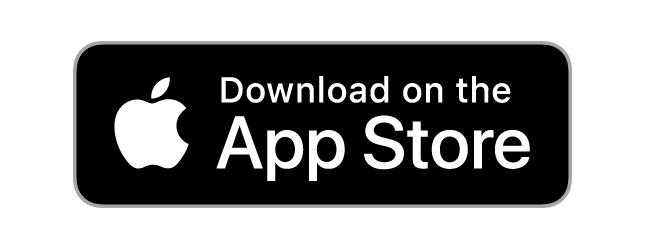
Understanding Patient Monitoring Systems: Types, Uses, and Components
- Published By The Statesman For The Statesman Digital
- 19 hours ago
What is a Patient Monitoring System?
Patient monitoring systems are made with high-quality technology. They are used to check and record patients' health signs such as heart rate, blood pressure, and oxygen levels. This monitoring system quickly gives accurate information about a patient’s condition. It makes it easy for doctors to check and make decisions according to the condition.
Types of Patient Monitors
-
Cardiac Monitors (Electrocardiography) - These are used to monitor the electrical activity of your heart, such as blood pressure, heart rate, and oxygen saturation, to ensure it is working normally. This is essential in cardiac care units and during surgeries.
-
Pulse Oximeters - Measure the oxygen level in the blood and provide an accurate oxygen and pulse rate reading for the patient. They are commonly used by patients suffering from Chronic Obstructive Pulmonary Disease (COPD).
-
Blood Pressure Monitors - These devices measure blood pressure. They can manage high and low blood pressure and protect against heart attacks.
-
Respiratory Monitors - These help monitor patients' breathing rates. They are used by patients with lung diseases and those under anaesthesia during surgery.
-
Multiparameter Monitors - This type of device measures several vital signs at once, such as heart rate, blood pressure, breathing rate, and temperature, and is used primarily in ICUs.
-
Fetal Monitors - These are used during pregnancy to monitor the baby's heart rate and the mother's shrinkage, ensuring the condition of the mother and baby.
-
EEG Monitors - Check the electrical activity in the brain. They are highly used in diagnosing sleep disorders and brain injuries and provide important information about brain function.
Read Also: Understanding Anaesthesia Machine: Uses, Purpose and its Components
-
Neurology machines encompass a wide range of diagnostic and therapeutic tools used to assess and treat conditions of the nervous system, including devices like EEG, EMG, MRI, and neurostimulation devices.Here's a more detailed look at some common types of neurology equipment:Diagnostic Tools:
- Electroencephalogram (EEG): Measures the brain's electrical activity using electrodes placed on the scalp, helping diagnose conditions like epilepsy and sleep disorders.
- Electromyography (EMG): Assesses the electrical activity of muscles and nerves, used to diagnose neuromuscular diseases.
- Magnetic Resonance Imaging (MRI): Provides detailed images of the brain and spinal cord, aiding in the diagnosis of various neurological conditions.
- Computed Tomography (CT) Scan: Uses X-rays to create images of the brain and spinal cord, useful for diagnosing structural abnormalities.
- Nerve Conduction Studies (NCS): Measures the speed and strength of nerve signals, helping to identify nerve damage.
- Transcranial Magnetic Stimulation (TMS): Uses magnetic pulses to stimulate or inhibit brain activity, used in research and treatment of certain neurological disorders.
- Diagnostic Ultrasounds: Used to visualize brain and spinal cord structures non-invasively.
- Transcranial Dopplers: Used to assess blood flow in the brain.
- Intracranial Pressure Monitors: Used to measure pressure inside the skull.
- Polysomnographs: Used to monitor sleep patterns and diagnose sleep disorders.
- Electroencephalogram (EEG): Measures the brain's electrical activity using electrodes placed on the scalp, helping diagnose conditions like epilepsy and sleep disorders.
What Are Patient Monitors Used For?
Patient monitors are essential in different medical situations.
- Instant monitoring of vital signs in emergencies as a life saviour for the patient.
- In surgeries and post-surgeries, spontaneously check the patient's health for safety.
- Used in critical conditions like heart disease or respiratory issues, it helps manage the condition and prevent risk.
Parts of a Patient Monitor
The patient Monitor comprises the latest technology and consists of several components.
- Sensors: In a patient monitor, a sensor is attached to the patient to measure specific vital signs such as pulse rate.
- Display Screen: Shows accurate data on the screen to check patient healthcare quickly.
- Alarm Setting: Inbuilt alarm to warn medical staff of any change in patient’s condition
- Data Storage: Automatically stores patients' data for later analyses.
How Patient Monitors Work
To understand how patient monitoring works, follow the steps below.
- Step 1 - Sensors collect data about the patient, like heart rate or oxygen levels.
- Step 2 -This data is sent to the monitor’s processing unit.
- Step 3 - The processing unit inspects the data and converts it into readable information.
- Step 4 - And then The information is displayed on the screen, showing actual measurements.
- Step 5 - Alarms explode if any change happens in the measurement, alerting healthcare providers to take action.
Conclusion
Patient monitoring systems are a part of modern healthcare, providing continuous, real-time data that helps keep patients' lives safe. Understanding these systems, including their types, uses, and parts, allows us to value how medical technology saves lives. Staying informed and advanced about them can help us all better understand the importance of these critical tools in healthcare.
Share on
SHARE YOUR COMMENT
MORE STORIES FOR YOU
Trending Stories
DJ Mo’s former illicit lo...
- Published By Jane
- January 15, 2024
Mapenzi! Zari and Tanasha...
- Published By Jane
- October 24, 2023
Zuchu Speaks on Diamond P...
- Published By Jane
- October 12, 2023
Hio Ni Upumbavu Wasituche...
- Published By Jane
- November 8, 2023
RECOMMENDED FOR YOU
Men Should Ejaculate at L...
- Published By The
- January 31, 2025
The White Lotus to Zero D...
- Published By The
- January 31, 2025
7 types of kisses you pro...
- Published By The
- January 31, 2025
Fashion: 4 types of under...
- Published By The
- January 31, 2025
Latest Stories
Kenyan woman arrested at...
- Published By The
- April 4, 2025
Boyfriend and a mysteriou...
- Published By The
- April 4, 2025
Moi University issues not...
- Published By The
- April 3, 2025
Understanding Patient Mon...
- Published By The
- April 3, 2025



